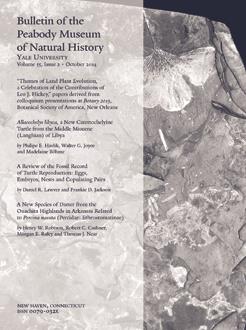The widespread recognition of the scientific importance of leaf architecture, the description and interpretation of leaf shape and venation, is a cornerstone contribution of Leo Hickey's career. One leaf architectural trait that Hickey developed is leaf rank, which describes the level of organization of leaf venation in a single, discrete, ordinal variable. He used this scoring system to provide a rapid summary of overall venation complexity and organization in modern and fossil leaves. Leaves with the most reduced and disorganized venation are scored as low rank, whereas leaves with complex and well-organized venation are given high values. Leaf rank data facilitated comparisons of early angiosperms in fossil floras and were invoked in hypotheses regarding angiosperm evolution and ecology. This study presents a large data set of leaf ranks that Leo Hickey scored while he was a researcher at the Smithsonian Institution from 1969 to 1982. The data set represents at least 2,435 observations of US National Herbarium specimens. These formative observations of leaf venation have never been published. Here, we examine Hickey’s data in light of current angiosperm phylogeny as a way to reinvestigate several of his hypotheses regarding leaf rank and angiosperm evolution: (1) leaf ranks tend to be consistent within a family; (2) leaf rank was low in early angiosperms, and high-rank venation occurred later; and (3) leaf rank is correlated with environmental conditions, often with reduced leaf rank values appearing in xeric taxa compared with close relatives under mesic conditions. These hypotheses have not been tested in the light of DNA-based, angiosperm-wide phylogeny, which was not available at the time when leaf rank was developed. We show that even with a DNA-based phylogeny, family-level comparisons show significant differences in average leaf rank; inferred leaf rank states along the early backbone of the angiosperm phylogeny are low, with high-rank taxa occurring across derived lineages; and there is a definite trend toward reduced leaf rank in xeric taxa, all consistent with Hickey’s hypotheses. This taxonomically rich set of observations can serve as a foundation for further investigations of the evolution of leaf vein organization.
How to translate text using browser tools
1 October 2014
Reinvestigation of Leaf Rank, an Underappreciated Component of Leo Hickey's Legacy
Stefan A. Little,
Walton A. Green,
Scott L. Wing,
Peter Wilf
ACCESS THE FULL ARTICLE
Angiosperm evolution
leaf architecture
leaf rank
leaf venation





